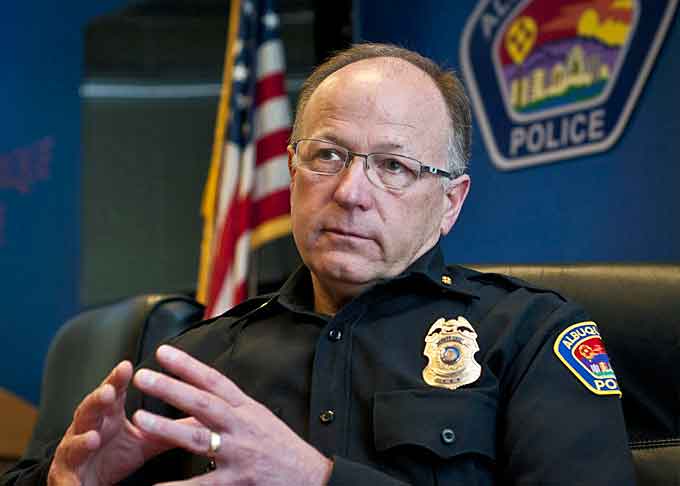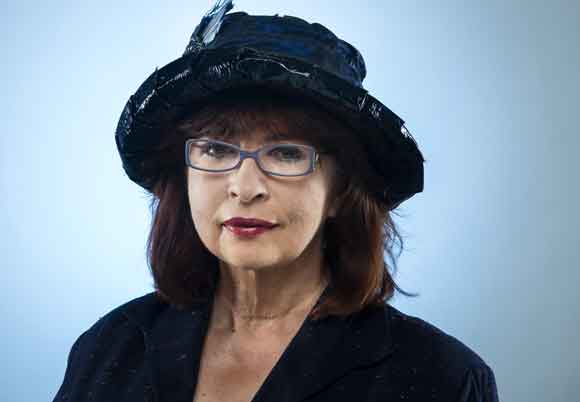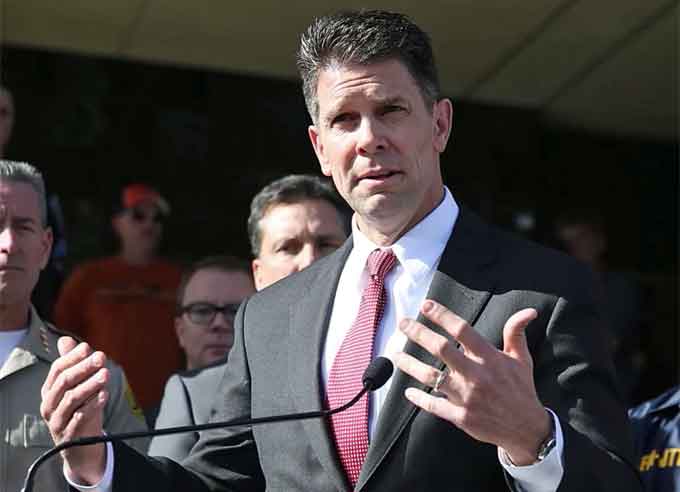FBI Deputy Director Andrew McCabe is stepping down from his job and is expected to be replaced by David Bowdich, a senior official who headed the FBI’s response to the terrorist attack in San Bernardino, Calif., according to people familiar with the plans.
McCabe will formally retire in March but plans to leave the deputy director position now, a person close to the matter confirmed to The Washington Post’s Devlin Barrett and Matt Zapotosky on Monday.
McCabe has often been a target of President Trump — who asked the deputy director in a private discussion whom he had voted for in the presidential election — and congressional Republicans, who have criticized the FBI for its Russia probe.
He will use leave time to fill out his remaining time at the agency.
(The former SWAT team sniper, David Bowdich, was pegged to be the next acting Deputy FBI Director after the removal of Andrew McCabe. Who is he? Courtesy of Fox News and YouTube. Posted on Jan 30, 2018)
Here’s what we know about Bowdich:
He began his career as a police officer in New Mexico
The Albuquerque native graduated from New Mexico State University in 1991.
He worked as an officer with the Albuquerque Police Department from 1991 to 1995, patrolling the Southeast and North Valley area commands, according to the Albuquerque Journal.

He also worked as a detective during his time in the North Valley.
“He was very ambitious, very smart and very physically fit,” Deputy Police Chief Robert Huntsman told the Albuquerque Journal. Huntsman was a sergeant when Bowdich was a cadet at the police academy.
“He was an informal leader for the other cadets,” Huntsman said.
He’s a former FBI SWAT team member and sniper
Bowdich joined the FBI in 1995 as a special agent and served as a SWAT team member and sniper at the agency’s San Diego field office.
There, he investigated violent crimes and gangs, according to an FBI news release.
One of his investigations included a year-long wiretap that resulted in the first federal criminal racketeering convictions brought against a street gang in Southern California, according to FBI officials.
(Learn More. Hear from David L. Bowdich, Associate Deputy Director FBI, as he speak’s at last year’s National Cyber Summit on the current status of intelligence, terrorism, cyber-crimes and the “Going Dark” debate. Courtesy of the National Cyber Summit and YouTube. Posted on Jan 30, 2018)
In 2005, he started leading a multiagency gang task force that through undercover operations and wiretaps investigated drug and racketeering cases against the Mexican Mafia, Bloods and Crips gangs and the Hells Angels Motorcycle Club, FBI officials said.
He oversaw non-white-collar crime investigations at the FBI’s San Diego field office . . .
In 2009, Bowdich became the assistant special agent in charge of the bureau’s San Diego office.

In that role, he identified the emerging kidnapping trend of Mexican cartel-related groups and, in response, created the country’s first FBI squad to pinpoint kidnapping threats on both sides of the U.S.-Mexico border.
That squad brought cases against 43 cartel members and associates who ran multiple kidnapping cells in the San Diego area, according to FBI officials.
Bowdich also oversaw the investigation of the deaths of two U.S. Border Patrol agents killed in the line of duty.
. . . and later ran the Los Angeles field office
In 2014, he was named the assistant director in charge of the FBI’s Los Angeles field office — overseeing seven Southern California counties with a population of nearly 19 million people, according to Los Angeles Times.

He talked to longtime writer and columnist Patt Morrison in 2015 about how federal agencies had to change after the 9/11 attacks.
“Former Director [Robert] Mueller told the story about how he went to see President Bush right after 9/11.
He began to tell him all the resources in place at the Pentagon; the World Trade Center; in Shanksville, Pa; and President Bush puts up his hand and says, ‘I got it. What are we doing to stop the next one?’ And that was the sea change the FBI had to make.”
In L.A., he was on alert for the possibility of a terrorist attack months before the San Bernardino mass shooting
In February 2015, Bowdich told Los Angeles Times’s Morrison that he believed Southern California was a potential terrorist target.
He cited a conversation he had at the time with William J. Bratton, who was then police commissioner in New York City.

“[Bratton] said New York is focused on terrorism because they’ve been hit. Their memory is very long. And they’ve had several plots that have been disrupted since,” Bowdich told the Times.
“Los Angeles is a big, big city, and we have some iconic potential targets. My concern is that we not become complacent, because complacency is very dangerous.”
He added that people had a responsibility to report concerning messages on social media or suspicious behavior.
“People have a right to say what they want, but if it appears they’re getting ready to go fight or conduct some sort of attack, those are a concern,” he said.
He led the FBI response to the San Bernardino shooting
After the December 2015 terrorist attack in San Bernardino that killed 14 people and wounded 22 others, Bowdich asked the public at a January 2016 news conference for help in figuring out whether the husband and wife behind the attack — Syed Rizwan Farook and Tashfeen Malik — had communicated with anyone after the shooting.
An 18-minute period after the shooting, from 12:59 p.m. to 1:17 p.m., puzzled investigators, who wondered if Farook and Malik went to a home or business or contacted anyone else.
(The FBI held a news conference on Dec 7, 2015 led by David Bowdich, Assistant Director in Charge of the Los Angeles Field Office, updating where the investigation into the San Bernardino mass shooting stood at that time. Courtesy of PBS NewsHour and YouTube. Posted on Dec 7, 2015)
Using traffic cameras, surveillance footage and witness accounts, Bowdich and investigators had already pieced together what Farook and Malik were doing in the four hours before the shooting, The Post’s Mark Berman reported at the time.
And investigators knew that about 45 minutes after the shooting the couple visited the city’s Lake Seccombe.

Divers were dispatched into the water to see what they could recover, but none of the items they found appeared to be relevant to the investigation, the FBI said.
Bowdich, who at the time still ran the FBI’s Los Angeles office, told reporters then that “until we close that gap, we just don’t know for sure.”
He later told Los Angeles Times that the husband and wife intended to detonate a pipe bomb hidden inside a bag at the Inland Regional Center, where the shooting took place.

















